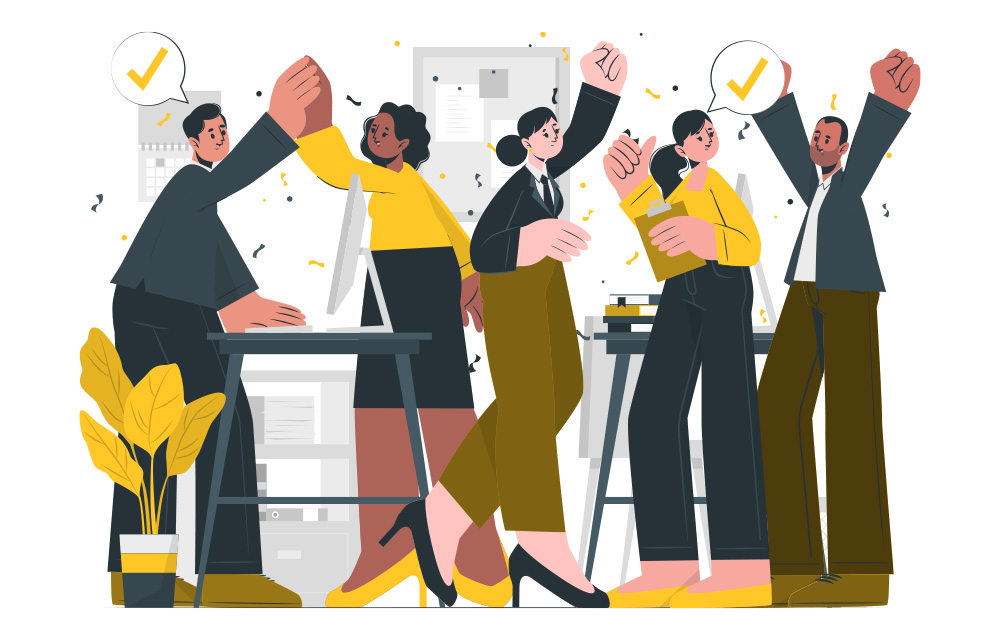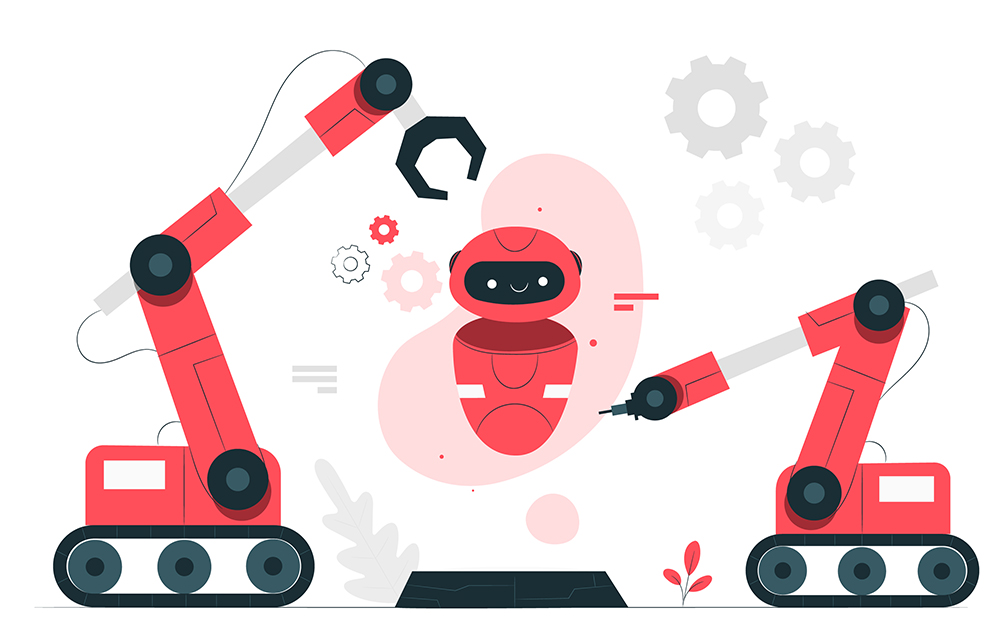It's important to acknowledge the vital role played by administrative professionals in the success of any busi...
Brickwork Blogs


Introduction
Understanding what drives employee motivation is essential in today’s fast-paced work environment. As psychologist Daniel Pink noted, “People are motivated by a sense of purpose, autonomy, and mastery.”
Motivated employees are more engaged, productive, and committed, leading to greater organizational success. Conversely, a lack of motivation can result in decreased performance and high turnover rates.
In this blog, we’ll explore the psychology of workplace motivation, examining key theories, the impact of leadership and culture, and practical strategies to enhance motivation. By grasping these elements, organizations can foster an environment where employees feel inspired and empowered. Let’s dive in!
Theories of Motivation
Understanding the various theories of motivation can provide valuable insights into what drives employee behavior in the workplace. Here are three key theories:
1. Maslow’s Hierarchy of Needs
Abraham Maslow proposed that human needs are arranged in a hierarchy, from basic physiological needs to self-actualization. In the workplace, this means that employees must first have their basic needs—such as salary, safety, and working conditions—met before they can focus on higher-level needs like belonging, esteem, and ultimately, personal growth. Organizations that address these needs can create a more motivated workforce.
2. Herzberg’s Two-Factor Theory
Frederick Herzberg identified two categories that influence workplace motivation: hygiene factors and motivators. Hygiene factors (such as salary, benefits, and job security) can prevent dissatisfaction but do not necessarily motivate. Motivators (like achievement, recognition, and opportunities for advancement) drive employees to perform at their best. By enhancing motivators while ensuring hygiene factors are adequate, organizations can foster greater motivation and job satisfaction.
3. Self-Determination Theory
Self-Determination Theory (SDT), developed by Edward Deci and Richard Ryan, emphasizes the importance of intrinsic motivation—doing something because it is inherently rewarding. According to SDT, three key psychological needs must be satisfied: autonomy (the desire to have control over one’s actions), competence (the need to feel effective in one’s activities), and relatedness (the need to feel connected to others). Fostering an environment that supports these needs can significantly boost employee motivation and engagement.
Role of Leadership
Leadership plays a crucial role in shaping employee motivation and overall workplace culture. Effective leaders inspire and empower their teams, creating an environment where motivation thrives. Here are keyways leadership influences motivation:
1. Setting a Vision
Leaders who articulate a clear and compelling vision help employees understand how their work contributes to broader organizational goals. This sense of purpose can significantly boost motivation, as employees feel their efforts are meaningful.
2. Leading by Example
Motivated leaders model the behaviors they wish to see in their teams. By demonstrating commitment, enthusiasm, and a strong work ethic, they inspire employees to adopt similar attitudes, fostering a culture of motivation and accountability.
3. Providing Support and Resources
Effective leaders ensure that their teams have the necessary resources, training, and support to succeed. By removing obstacles and facilitating professional growth, leaders empower employees to take ownership of their work, enhancing intrinsic motivation.
4. Recognizing and Rewarding Efforts
Recognition is a powerful motivator. Leaders who regularly acknowledge employees’ contributions, whether through formal rewards or informal praise, reinforce positive behaviors and encourage continued high performance.
Workplace Culture and Motivation
Workplace culture significantly influences employee motivation and engagement. A positive culture fosters an environment where employees feel valued, connected, and empowered. Here are key aspects of how workplace culture impacts motivation:
1. Values and Beliefs
A strong organizational culture aligned with core values encourages employees to find purpose in their work. When employees share and believe in the company's mission, their intrinsic motivation increases, driving them to contribute meaningfully.
2. Communication
Open and transparent communication fosters trust and collaboration. When employees feel comfortable sharing ideas and feedback, they are more engaged and motivated. Cultivating an environment where everyone’s voice is heard promotes a sense of belonging.
3. Inclusivity and Diversity
A culture that embraces diversity and inclusion enhances employee motivation by ensuring that all individuals feel respected and valued. Diverse perspectives lead to greater creativity and innovation, which can invigorate the workplace.
4. Work-Life Balance
Organizations that prioritize work-life balance demonstrate a commitment to employee well-being. Offering flexible work arrangements and encouraging time off can boost morale, leading to higher motivation and job satisfaction.
5. Recognition and Celebration
A culture that regularly recognizes and celebrates achievements fosters motivation. When employees see their hard work acknowledged, they are more likely to stay engaged and strive for excellence.

Practical Strategies for Enhancing Motivation
Enhancing motivation in the workplace requires intentional strategies that foster engagement and drive performance. Here are some effective approaches:
1. Goal Setting
Encourage employees to set clear, achievable goals aligned with both personal aspirations and organizational objectives. Using the SMART criteria (Specific, Measurable, Achievable, Relevant, Time-bound) helps create a roadmap for success and provides a sense of accomplishment when goals are met.
2. Providing Regular Feedback
Establish a culture of continuous feedback where employees receive constructive insights on their performance. Regular check-ins and positive reinforcement help employees understand their strengths and areas for improvement, keeping them engaged and motivated to grow.
3. Offering Opportunities for Professional Development
Invest in employee growth by providing access to training programs, workshops, and mentorship. Encouraging continuous learning not only enhances skills but also fosters a sense of competence and autonomy, both of which are critical for intrinsic motivation.
4. Cultivating a Positive Work Environment
Create a supportive and inclusive workplace culture where employees feel valued and connected. Promote teamwork, collaboration, and open communication to build strong relationships, as a positive environment enhances overall motivation.
5. Implementing Recognition Programs
Establish recognition initiatives that celebrate employee achievements, whether through formal awards or simple acknowledgments. Recognizing hard work fosters a sense of belonging and encourages continued effort.
Also read: Tips to Avoid Distractions in the Workplace and Prevent Burnout
Conclusion
Understanding the psychology of motivation in the workplace is essential for fostering a productive and engaged workforce. By exploring key motivation theories, recognizing the role of leadership, and implementing practical strategies, organizations can create a culture that enhances employee motivation.
Ultimately, a motivated workforce not only drives individual performance but also contributes to overall organizational success. By prioritizing motivation, companies can cultivate an environment where employees feel valued, inspired, and empowered to reach their full potential.


